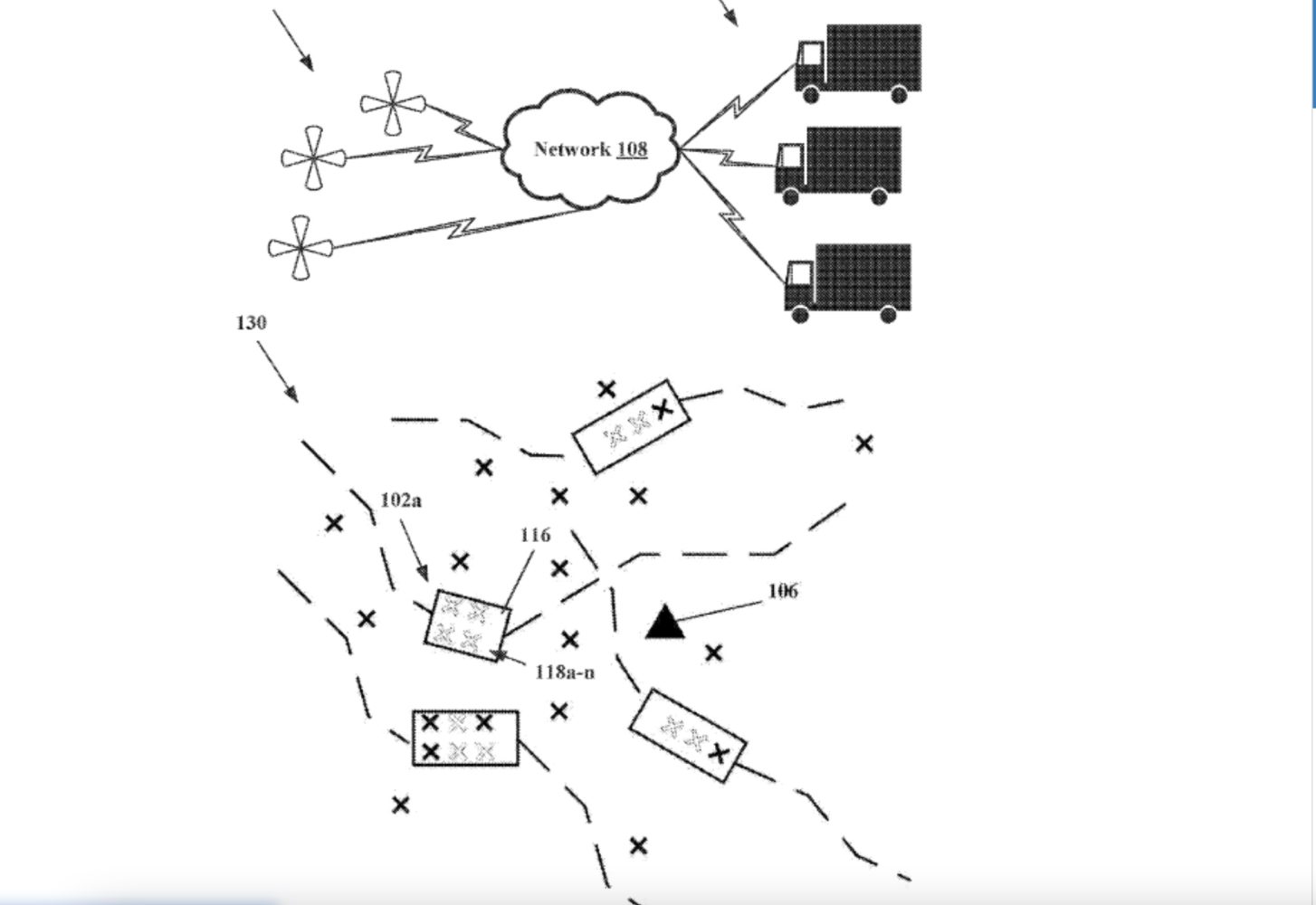
Wading into an area Amazon, Walmart, and even automotive company Renault have all examined before, US car giant Ford is looking into a cargo truck that can act as a logistics and docking hub for drones making last-mile deliveries.
The system is detailed in a US patent filed by the company back in January, but which was only recently published. The Ford document describes a “(s)ystem and methods for a decentralized hybrid air-ground autonomous last-mile goods delivery” using trucks loaded with goods to serve as docking stations for drones flying orders to clients. At its most basic level, the scheme would extend fixed-location storage and logistic facilities to mobile platforms (i.e. trucks), to and from which UAVs would fly round-trip runs to customers’ homes.
Those kinds of operations have already been envisioned by Amazon and Walmart – the latter through its GoLocal service. A similar idea is also at the heart of a freight truck Renault has produced in the UK that contains bike and drone vehicles for deliveries to clogged city centers where access by road becomes difficult.
Read more: Renault’s new delivery solution combines electric van, bike, and drone
But Ford patent goes further by making its logistic trucks potential docking stations for any drone that has completed its last-mile delivery, and either can’t access the vehicle it originally departed from that has left the area since; or finds a different nesting truck closer to its position. It also adds a potential network of stationary hubs into the mix.
“After delivery, a drone can either dock back with the original delivery vehicle or dock somewhere else such as another delivery vehicle or a fixed docking station,” the patent says. “The drone can be configured to ascend in the air to a specified height to gain line-of-sight to potential vehicles nearby. The drone then initiates a discovery phase to obtain information on all available in-range docking/charging stations. It then wirelessly broadcasts a ‘request’ to discoverable/discovered stations with information regarding the drone’s current status (location, remaining charge, and so forth).”
The imagined operation isn’t entirely novel, with those under development by both Amazon and Walmart taking a generally similar approach. Like those, Ford’s main objective is to transport the largest quantity of orders by freight trucks to addresses in the same area, then dispatch drones to make last-mile deliveries far faster than a single road vehicle can to multiple addresses.
By adding the potential of any truck or fixed station involved to become the return docking station for drones returning from those deliveries, however, Ford does add an extra element of potential turn-around time for UAVs making numerous runs.
FTC: We use income earning auto affiliate links. More.



Comments